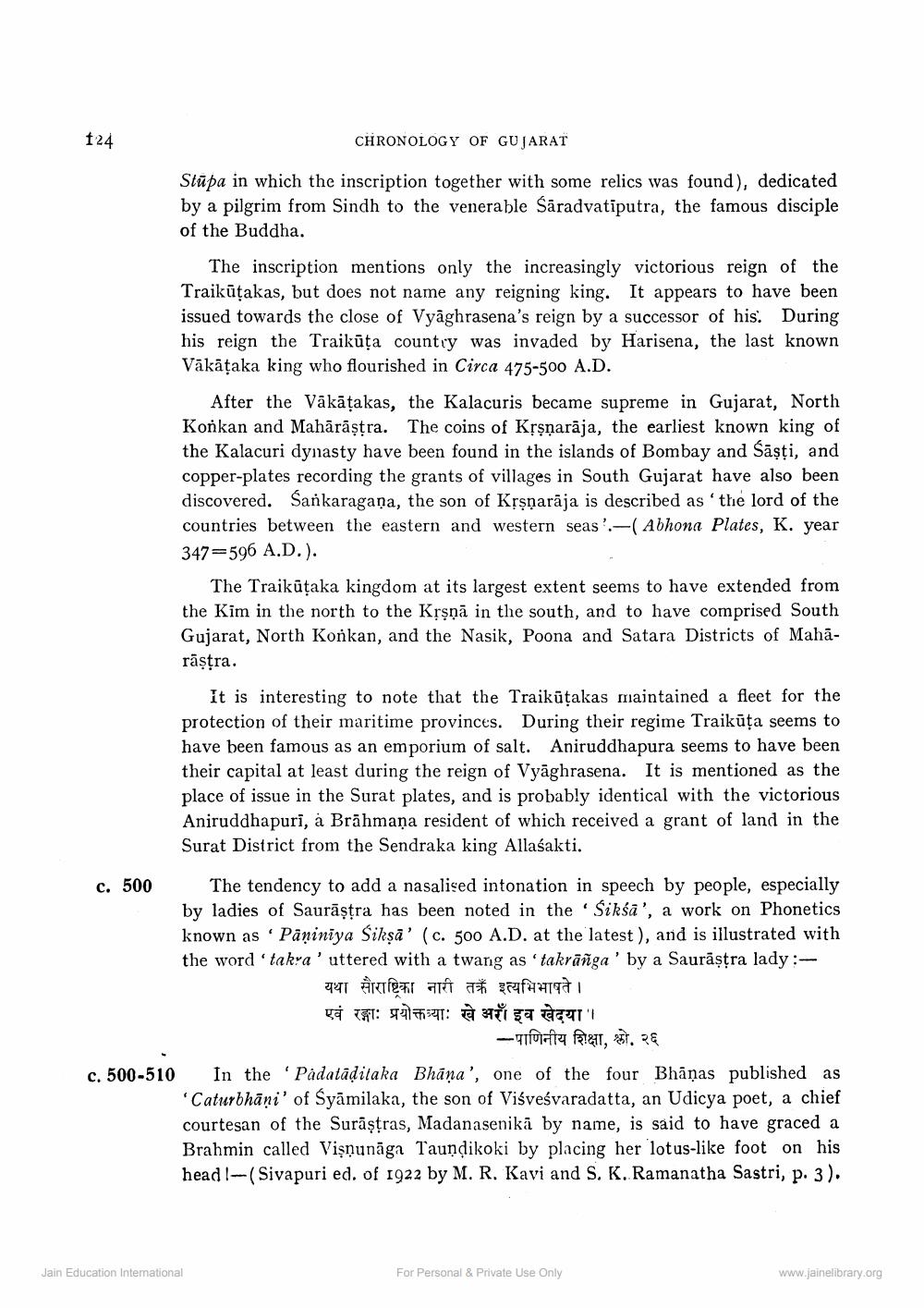________________
24
CHRONOLOGY OF GUJARAT
Stūpa in which the inscription together with some relics was found), dedicated by a pilgrim from Sindh to the venerable Sāradvatīputra, the famous disciple of the Buddha.
The inscription mentions only the increasingly victorious reign of the Traikūțakas, but does not name any reigning king. It appears to have been issued towards the close of Vyāghrasena's reign by a successor of his. During his reign the Traikūța country was invaded by Harisena, the last known Vākāțaka king who flourished in Circa 475-500 A.D.
After the Vākāțakas, the Kalacuris became supreme in Gujarat, North Konkan and Mahārāştra. The coins of Krşnarāja, the earliest known king of the Kalacuri dynasty have been found in the islands of Bombay and Śāşti, and copper-plates recording the grants of villages in South Gujarat have also been discovered. Sankaragana, the son of Krşņarāja is described as the lord of the countries between the eastern and western seas':-( Abhona Plates, K. year 347=596 A.D.).
The Traikūțaka kingdom at its largest extent seems to have extended from the Kim in the north to the Krsņā in the south, and to have comprised South Gujarat, North Konkan, and the Nasik, Poona and Satara Districts of Mahārāştra.
It is interesting to note that the Traikūțakas maintained a fleet for the protection of their maritime provinces. During their regime Traikūța seems to have been famous as an emporium of salt. Aniruddhapura seems to have been their capital at least during the reign of Vyāghrasena. It is mentioned as the place of issue in the Surat plates, and is probably identical with the victorious Aniruddhapuri, à Brāhmaṇa resident of which received a grant of land in the Surat District from the Sendraka king Allasakti.
c. 500 The tendency to add a nasalised intonation in speech by people, especially
by ladies of Saurāṣtra has been noted in the · Śikśā', a work on Phonetics known as Pāņiniya Sikşā' (c. 500 A.D. at the latest ), and is illustrated with the word 'takra' uttered with a twang as'takrāñga' by a Saurāșțra lady:
यथा सौराष्टिका नारी त] इत्यभिभाषते । एवं रङ्गाः प्रयोक्तव्याः खे अराइव खेदया ।
- Mate 1721, T. & c. 500-510 In the 'Padatāditaka Bhāņa', one of the four Bhāņas published as
'Caturbhāņi' of Syāmilaka, the son of Viśveśvaradatta, an Udicya poet, a chief courtesan of the Surāştras, Madanasenikā by name, is said to have graced a Brahmin called Vişņunāga Taundikoki by placing her lotus-like foot on his headl-(Sivapuri ed. of 1922 by M. R. Kavi and S. K. Ramanatha Sastri, p. 3).
Jain Education Intemational
For Personal & Private Use Only
www.jainelibrary.org




